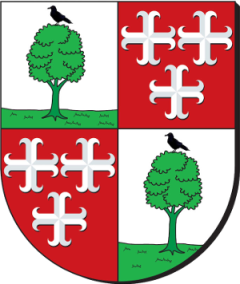From the press you have learned that Professor Wim van den Doel has written a hefty biography Snouck of 650 pages. On April 29, at 20.30, an interview with Wim van den Doel about this biography of Christiaan Snouck Hurgronje will be broadcast from the Leiden University Library.
At the request of the Administrators, I have attached a brief summary of the biography of Christiaan Snouck Hurgronje, as it appears on the website of the Stichting Historische Begraafplaats Groenesteeg in Leiden, where Christiaan Snouck Hurgronje is buried in the family plot. I am a board member of this foundation, which is responsible for the management of this cemetery.
On the cemetery’s website, a biography we composed is included in the section Beschreven personen.
To support this lecture, film recordings were made for a teaser at the Groenesteeg cemetery. This lecture is accessible to the public. The teaser is already available on YouTube.
Matthijs Snouck Hurgronje,
Board member Stichting Historische Begraafplaats Groenesteeg
Christiaan Snouck Hurgronje (1857-1936): basement tomb 168B, box B Arabist, Islamologist, anthropologist, adventurer, but also ‘undercover agent avant la lettre’
Personal details
Born: February 8, 1857 at Oosterhout
Son of: Jacob Julianus Snouck Hurgronje and Anna Maria de Visser
Marriages:
– On Java: with Sankana in 1890 and with Siti Sadijah in 1898
– in the Netherlands: with Ida Maria Oort on 8 July 1910 in Zutphen
Deceased: June 26, 1936 in Leiden. Buried: June 29, 1936 in Leiden
Biography summary
Christiaan Snouck Hurgronje was born in Oosterhout in Brabant. In 1874, he begins to study theology in Leiden. After his final exams, he continues with Semitic languages and specialises in Arabic. In 1880, aged just 23, he obtains his doctorate cum laude. His dissertation is titled ‘The Meccan Feast’.
He then goes on to study Arabic and is able to understand the language, the culture and the religion thoroughly. In 1881, he becomes a teacher at the municipal institute in Leiden, which provides education for East Indies civil servants.
In the study of Arabic, Snouck Hurgronje goes his own way from the very beginning. His main interest is in the language of Islam. He learns Acehs, Malay, Javanese and several other languages and dialects.
Snouck Hurgronje focuses on the study of Islam, in particular Muslim law. Snouck Hurgronje did pioneering work with his articles on the foundations and content of these laws. Partly because of this, he is one of the founders of contemporary international scholarship on Islam.
Snouck Hurgronje wants to go to Mecca. In 1884, he sets foot on Arab soil in Jeddah. In Jedda, he is a guest of the Dutch consulate and from there he wants to embark on a pilgrimage to Mecca. His aim is to master the regional dialect as quickly as possible. Snouck Hurgronje also had himself circumcised, takes the Arabic name Abd al-Ghaffar and becomes a Muslim, because only Muslims have access to the Haj, the Islamic pilgrimage.
He succeeds in forging alliances within the Muslim world, with Arab scholars and dignitaries. He acquires information that no other Westerner would be able to get. He is ready for the pilgrimage.
He travels to Mecca and stays there for about six months, but then disaster strikes. In an affair surrounding a memorial stone with Aramaic inscriptions, Snouck Hurgronje becomes suspect of theft and his position becomes untenable. He has to leave the country, leaving all his photos and notes behind. Fortunately, these are saved and were later sent to him. They are the first pictures ever taken in Mecca.
After returning to the Netherlands, Snouck Hurgronje commences a book with many – mostly self-made – photographs about his stays in Jiddah and Mecca. With this, he achieves great renown. In 1887, he becomes a lecturer at the State University of Leiden, where he teaches ‘Institutions of Islam’. Meanwhile, he prepares for another faraway journey. Snouck Hurgronje leaves for the Dutch East Indies in 1889, with Aceh as his final destination.
It has been very turbulent there for several years. Since 1873, the Netherlands has been at war with the ‘rebellious’ Acehnese. In May 1892 Snouck submits a report on his stay in Aceh, which serves as a starting point for his two-volume work ‘The Acehnese’. In 1896, he is appointed advisor to military governor Van Heutsz and in that capacity makes an important contribution to a bloody war, after which the Acehnese surrender. In this function, Snouck Hurgronje is of great value to the Netherlands for many years, until a disagreement with Van Heutsz makes a longer stay in the Dutch East Indies impossible and he sets foot on Dutch soil again in 1906, ’embittered’.
Snouck Hurgronje’s return is taken as an opportunity by Leiden University to appoint him as Professor of Arabic. In addition, he remains consultant for Indonesian Affairs. He goes to live at Witte Singel and marries Ida Maria Oort in 1910. They have a daughter (Christien) and move to Rapenburg 61 in 1919, a stately mansion with an 18th-century façade and balcony. Meetings and lectures are also held in this building. In 1927, Snouck Hurgronje turns seventy and resigns as a professor. Then, together with his successor Prof. Dr. A.J. Wensinck, he founds the Oriental Institute.
Aged almost 80, he dies in his home on Rapenburg. After his death, the entire collection of the Oriental Institute, including the extensive library, is housed in his home at Rapenburg 61. Since then, this house has been known as the Snouck Hurgronje House, where the Leiden University Fund has been housed for over eighty years since his death. It currently (2019) houses the Institute for the Dutch Language. Leiden has a Snouck Hurgronjestraat in the Professorenwijk.

0 comments